
REV Ocean Finds Ship Management Partner for New Expedition Vessel
innovation board will evaluate and recommend research projects for REV Ocean to pursue and ensure the highest scientific standards and research quality onboard.The vessel can accommodate 106 people, of which around 50-65 will be crewed, depending on the planned operations. The ship features scientific equipment, such as echo sounders and sonars to study fish and other marine species, an advanced eco-harvesting trawl sampling system for selective live catch of biomass and pelagic samples, a submarine, an advanced ROV, and multiple on-board laboratories.The vessel will undergo final outfitting later
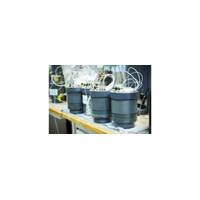
£4M Investment to Enhance Marine Robotics Research Capabilities
and carbon. These will be integrated into autonomous underwater vehicles such as gliders and NOC’s Autosub Long Range (ALR).These advances will be made available to the UK marine science community through the UK’s National Marine Equipment Pool, the largest centralized marine scientific equipment pool in Europe, as part of the National Marine Facilities, managed by NOC.“By accelerating the adoption of sensor innovation, this investment will help position the UK at the cutting edge of marine research capabilities,” says FMRI Program Director Kristian Thaller. “It will
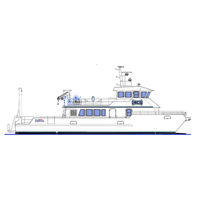
University of North Carolina Wilmington Orders Research Vessel from All American Marine
2,100 rpm, the propeller-driven vessel will achieve a transit speed of 21 knots and a fuel-efficient survey operation speed of 1.5 knots. The large fuel capacity of 1,500 gallons ensures extended operational range and endurance.The vessel will feature state-of-the-art navigation, communication and scientific equipment, including a Kongsberg ADCP electronics suite and a fixed WASSP multibeam system to facilitate comprehensive oceanographic and biological research. The vessel’s design includes large wet and dry lab spaces, live-aboard quarters for up to 10 personnel and the capacity to accommodate 20
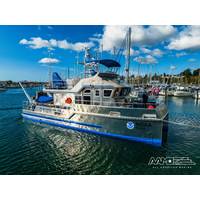
All American Marine Launches New Research Vessel for NOAA
is a covered flybridge on the upper deck, allowing vessel operations from a higher elevation while conducting research missions. The top deck also features an InterOcean conduction wire winch, a hauling winch and a Morgan 300.4 crane. The main deck features an adjustable A-Frame for launching scientific equipment. Additional features of the research vessel include both a wet laboratory for examining specimens and a dry laboratory for processing data. On board the vessel’s main deck is a fully equipped galley and comfortable dinette with a settee/bunk, kitchenette and wet head.Ron Wille, All American
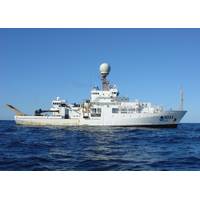
Markey Wins Deal to Refurbish Winches for NOAA Research Vessel
feet long and displaces more than 3,200 tons, making it the largest ship in the NOAA fleet. The vessel is equipped with a suite of instruments for collecting and assessing scientific data above and below the ocean surface. Onboard cranes and winches enable the vessel to support the use of heavy scientific equipment such as submersibles and surface floats
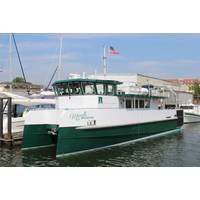
Hybrid Research Vessel Delivered to University of Vermont
;s Rubenstein School of Environment & Natural Resources. These functions include low emissions, low fuel burn rates, a stable and safe platform for research, high maneuverability, and the ability to tow trawls sleds, and plankton nets. The vessel will also facilitate the launch and recovery of scientific equipment, small remotely operated vehicles (ROVs) and sediment sampling devices.The Marcelle Melosira is equipped with a hybrid-electric power and propulsion system supplied and integrated by BAE Systems. The vessel is also equipped with dual control stations to maximize operability, and offers a large
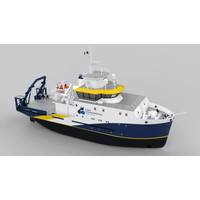
Freire Shipyard Inks Deal to Build Oceanographic Research Vessel
with BV COMF 2 class notation but also with DNV SILENT-F standard). The dynamic positioning system and the electric bow thruster facilitate the maneuverability of the boat.It will have an oceanographic marine telescopic main crane at the stern for marine use designed to launch and to recover scientific equipment (corer, buoys, etc.) and general handling on the aft part of the vessel. In addition, she will have a type A stern gantry, a T-type lateral gantry and a telescopic rail beam for CTD maneuvering. For fishing operations, this boat will also have two trawling winches and a removable net drum
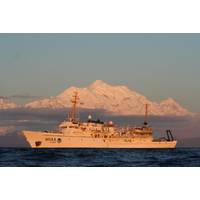
Thoma-Sea Awarded Contract to Build Two NOAA Research Ships
current (AC) azimuthing stern thrusters using fixed pitch propellers.The ships will be designed to coordinate, acquire and process large data sets like those gathered from mapping the seafloor and characterizing marine habitats. They will also have the ability to deploy crewed survey work boats, scientific equipment and uncrewed systems, which enhance the work the ship does.“This is another milestone in NOAA’s effort to recapitalize our aging fleet of ships,” said NOAA Corps Rear Adm. Nancy Hann, director of NOAA Marine and Aviation Operations and the NOAA Commissioned Officer Corps
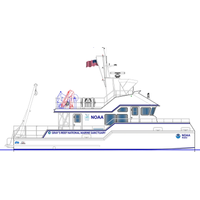
AAM to Build Research Vessel for NOAA Gray’s Reef National Marine Sanctuary
;top covering on the upper deck, allowing vessel operations from a higher elevation while conducting research missions. The top deck also features an Interocean Conduction Wire Winch, Hauling Winch and a Morgan 300.4 crane. The main deck features an adjustable A-Frame for launching scientific equipment. Additional features of the research vessel include both a wet laboratory for examining specimens and a dry laboratory for processing data. On board the vessel’s main deck are a fully equipped galley and comfortable dinette with settee/bunk, kitchenette, and wet head


 February 2025
February 2025





